 China Southern Airlines flight attendants win titles in service contest
China Southern Airlines flight attendants win titles in service contest
 Pupil's performance art persuades people to stop smoking
Pupil's performance art persuades people to stop smoking
 Nie Chenxi's clay tigers
Nie Chenxi's clay tigers
 Children's Day wishes
Children's Day wishes
 Chinese Kung Fu charms Silicon Valley
Chinese Kung Fu charms Silicon Valley
 Tranquil Yankou ancient town
Tranquil Yankou ancient town
 Lake Geneva: A show of swans
Lake Geneva: A show of swans
 Beautiful sunset over the Irtysh River
Beautiful sunset over the Irtysh River
 Qingjing Mosque: Witness of the ancient Maritime Silk Road
Qingjing Mosque: Witness of the ancient Maritime Silk Road
 Neiliansheng – more than 100 years of fashion
Neiliansheng – more than 100 years of fashion
We are now about one year from the opening of Shanghai Disneyland. And it was just announced that the project is being increased by $800M, thus bringing the total investment to $5.5 billion. So Disney’s sixth theme park is larger than some (Hong Kong) and smaller than others (Florida). But make no mistake. Shanghai Disneyland is a big deal and a transformative event for both Disney and China. This one is a game changer – and for three reasons.
First, Shanghai Disneyland will be the first major theme park in the world’s most populous country.
Disneyland Tokyo had approximately 30M visitors in 2013 – a record high for that park and way above the 7.4M people that visited Disneyland Hong Kong that year. However, Disney World Florida is still the world’s most popular resort with 63M visitors in 2013.
However, compare that to the 2010 Shanghai Expo, which in just six months of operations attracted over 73M visitors. Or compare it to the 330M people who currently live under three hours from Shanghai.
By any measure, Shanghai Disneyland should be the most popular resort on the planet. And it will likely dwarf (pun intended) any other Disneyland or theme park.
Second, a developing economy theme park is a fundamentally different animal.
To date, theme park economics (staffing levels, cost structures, volumes, scale, etc.) have reflected the economics and demographics of developed economies. Volumes are relatively small. Labor costs are high. Projects are developed in a relatively free market. And prices reflect a mature economy’s purchasing power.
However a theme park in a developing economy is a fundamentally different animal. Casinos in Macau discovered this when they realized they could build much larger and much cheaper than in Las Vegas. They realized they could radically increase staffing and service levels. And they realized that they also had to deal with much larger customer volumes, with much lower GDP per capita. So they didn’t just build bigger versions of what was in Las Vegas. They created new types of casinos based on developing country economics.
Does it change a theme park when you can have five times the Western staffing levels? When you can build structures that are much larger and also much cheaper? How does that impact the experience? How does that impact “entertainment”?
Shanghai Disneyland is the first “developing economy theme park”. And nobody knows what that really means yet.
Third, Shanghai Disneyland starts the great race to become the “Disney of China”.
Shanghai Disneyland is a game changer for Disney, for Chinese consumers, and for Chinese entertainment. Because it raises a critical question: Who is going to be the “Disney of China?”
Baidu is referred to as the “Google of China”. Huayi Brothers is the “Warner Brothers’ of China”. Nike is so successful in China it is called “the Nike of China”. And so on. Sometimes the global company wins. Sometimes the local one does.
But we still do not know who will be the “Disney of China”. Who is going to be the leading children’s entertainment company of China? Who is going to be the company that combines entertainment and theme parks (i.e., real estate) in such a way that it captivates the imagination of Chinese children? And who by winning in China is going to be the leader in what will be the world’s largest entertainment market?
The opening of Shanghai Disneyland can be the considered the firing of the starter’s pistol in the race to be the “Disney of China”. Certainly, Disney aims to win. This park will be far and away much more distinctive than the local alternatives today, both in content and in delivery. But other theme parks will likely rapidly copy what Disney is currently building. It could be a real estate company like Dalian Wanda. They are already the largest commercial real estate company in China, the owner of AMC Theaters and are currently building the largest movie studio in China. Who will win is the big question.
China’s children need entertainment and Shanghai Disneyland will deliver the goods. That changes the game for Disney and for China. But this is really just the beginning of the race.
You can read more about the fight for Chinese consumers in our #1 best-seller the One Hour China Book. Now available on Amazon for the price of a medium latte (www.onehourchina.com)
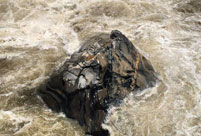 Magnificent Hutiao Gorge
Magnificent Hutiao Gorge  Heat waves hit China
Heat waves hit China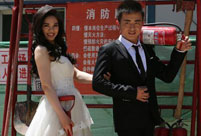 Love at the construction site
Love at the construction site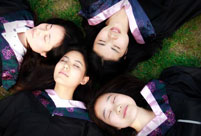 Graduation photos bring memories back to life
Graduation photos bring memories back to life Art school students present works in Nanjing
Art school students present works in Nanjing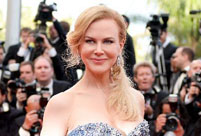 Opening ceremony of 67th Cannes Film Festival
Opening ceremony of 67th Cannes Film Festival Pulse of Xiamen - Int'l Yoga art festival in May
Pulse of Xiamen - Int'l Yoga art festival in May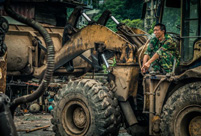 Photo story: Life of a scrap metal recycle worker
Photo story: Life of a scrap metal recycle worker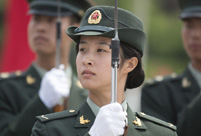 Training of the PLA's first female honor guard
Training of the PLA's first female honor guard Dali, an ideal summer vacation destination
Dali, an ideal summer vacation destination Xichan Temple's little monk hit the Internet
Xichan Temple's little monk hit the Internet Monologue of a modern dancer
Monologue of a modern dancer College girl proposes to boyfriend on Weibo
College girl proposes to boyfriend on Weibo Special operation members in counter-terrorism training
Special operation members in counter-terrorism training American football brings manhood out of boys
American football brings manhood out of boysDay|Week|Month